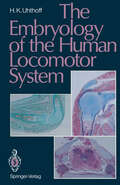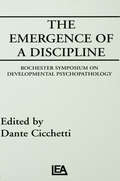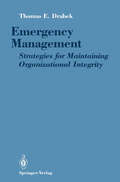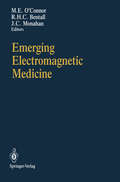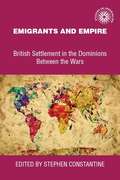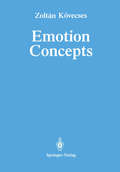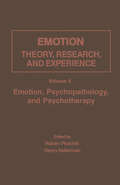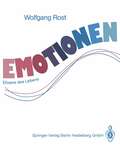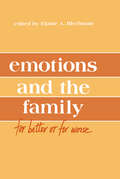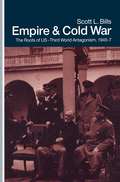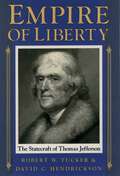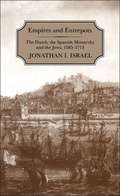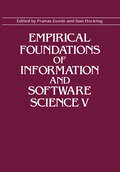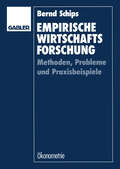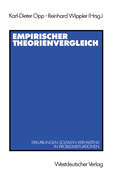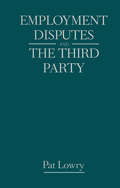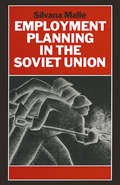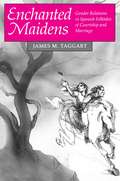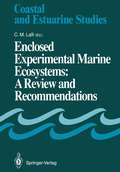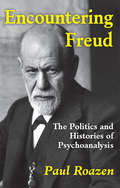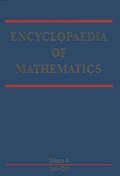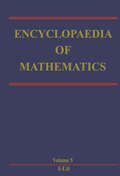- Table View
- List View
The Embryology of the Human Locomotor System
by Hans K. UhthoffIn this Atlas I want to share with my fellow clinicians the fascina tion I experienced while discovering the marvels of embryonic development. Why haven't these marvels excited me before? I believe that the use of schemata and drawings or photographs of animal embryos, commonly used in textbooks of embryology, simply did not appeal to me as a clinician. Only actual photo graphs of human embryos can establish the bond necessary for interaction. Just imagine the excitement when you find out how many struc tures you can recognize in a 5-week-old embryo, barely measuring 1 cm in length. But our fascination does not stop here. The pro gression of changes taking place during the next 3 weeks is so rapid that at the time when the embryo measures 3 cm, all structures familiar to us are not only easily recognizable, but also already in their anatomical position. How can we hide our amazement when we realize that such a state of perfection is present in an embryo a bit longer than the distal phalanx of our little finger? At 8 weeks the embryonic period ends and the fetal one starts. Although the shape and the relative size of bones, joints, muscles, nerves, and vessels will undergo changes, the basic elements are all in place. This implies that major malformations must develop during the embryonic period.
The Emergence of A Discipline: Rochester Symposium on Developmental Psychopathology, Volume 1 (Rochester Symposium on Developmental Psychopathology Series)
by Dante CicchettiCompiled from papers presented at the Rochester Symposium on Developmental Psychopathology, this is the first book of its kind devoted to disseminating theory and research in the field of psychopathology. Contributions to this text are unified by their incorporation of developmental principles into the study of various types of emotional disorders in children and adults. Also emphasized in this book is the importance of bridging the dichotomy between scientific research and the application of this knowledge to clinical populations. Designed as both a required and supplementary text for advanced undergraduate and graduate courses in developmental psychopathology, abnormal, clinical, and health psychology as well as neuroscience. Also insightful for psychiatric and pediatric residents, nurses, and social workers.
The Emergence of A Discipline: Rochester Symposium on Developmental Psychopathology, Volume 1 (Rochester Symposium on Developmental Psychopathology Series)
by Dante CicchettiCompiled from papers presented at the Rochester Symposium on Developmental Psychopathology, this is the first book of its kind devoted to disseminating theory and research in the field of psychopathology. Contributions to this text are unified by their incorporation of developmental principles into the study of various types of emotional disorders in children and adults. Also emphasized in this book is the importance of bridging the dichotomy between scientific research and the application of this knowledge to clinical populations. Designed as both a required and supplementary text for advanced undergraduate and graduate courses in developmental psychopathology, abnormal, clinical, and health psychology as well as neuroscience. Also insightful for psychiatric and pediatric residents, nurses, and social workers.
Emergency Management: Strategies for Maintaining Organizational Integrity (Monograph #No. 51)
by Thomas E. DrabekEmergency management is an essential aspect of environmental stewardship. Its essence is distilled from complex interrelationships which link social, psychological, physical, biological, and poli tical sciences. Because there is seldom an opportunity to illustrate, much less teach, those complexi ties wi thin an integrated curriculum, this volume deserves a warm welcome because it helps do that. Dr. Drabek began his study of emergency management more than a quarter century ago in 1963, and his dedication to the field has led to this monograph. He now is entering an international arena; his most recent studies involve countries in Europe, Mexico, and Canada, as well as numerous locations throughout the United States. His experience is evident in his assessment of organizational integrity which this monograph explores. As a frequent lecturer at the National Emergency Training Center of the United States, and other locations within and outside the country, the perspective he presents in this volume provides the student with an important vantage point. His view is clearly focused on emergency management. However, the lessons and strategies revealed here are equally relevant to management of environmental protection, regulatory compliance auditing (i. e. , environmental auditing), and those other monitoring and response skills prerequisite to being a professional and effective environmental steward.
Emerging Electromagnetic Medicine
by Mary E. O'Connor Richard H. C. Bentall John C. MonahanEmerging Electromagnetic Medicine presents the latest research findings in the field of electromagnetic radiation. The book discusses the research of current active researchers in terms of synthesizing and sharing their ideas on the use of electromagnetic fields in diagnostic and therapeutic medicine, now and in the future, including the benefits and risks involved. The book consists of three parts prefaced by a brief historic perspective. Section I describes the theoretical concerns and actual mechanisms involved; Section II covers current preclinical studies, performed in vivo and in vitro, concerning the biological action of the electromagnetic radiation; and Section III reports on actual clinical applications of electromagnetic therapy and also the current machinery used to do so.
Emigrants and empire: British settlement in the dominions between the wars (Studies in Imperialism #14)
by Jan GothardProfessor Drummond's two pioneering studies, British Economic Policy and the Empire 1919-1939, 1972, and Imperial Economic Policy 1917-1939, 1974, helped to revive interest in Empire migration and other aspects of inter-war imperial economic history. This book concentrates upon the attempts to promote state-assisted migration in the post-First World War period particularly associated with the Empire Settlement Act of 1922. It examines the background to these new emigration experiments, the development of plans for both individual and family migration, as well as the specific schemes for the settlement of ex-servicemen and of women. Varying degrees of encouragement, acquiescence and resistance with which they were received in the dominions, are discussed. After the First World War there was a striking reorientation of state policy on emigration from the United Kingdom. A state-assisted emigration scheme for ex-servicemen and ex-servicewomen, operating from 1919 to 1922, was followed by an Empire Settlement Act, passed in 1922. This made significant British state funding available for assisted emigration and overseas land settlement in British Empire countries. Foremost amongst the achievements of the high-minded imperial projects was the free-passage scheme for ex-servicemen and women which operated between 1919 and 1922 under the auspices of the Oversea Settlement Committee. Cheap passages were considered as one of the prime factors in stimulating the flow of migration, particularly in the case of single women. The research represented here makes a significant contribution to the social histories of these states as well as of the United Kingdom.
Emotion Concepts
by Zoltan KövecsesThis chapter briefly describes the general goals of the book, introduces the most fundamental features of the methodology that is employed to achieve these goals, and gives an outline of the structure of the book. A more detailed account of the goals and methodology is presented in chapters 2 and 3, respectively. What the Book Is About The main objective of this study is to attempt to answer the question: How do people understand their emotions? As we shall see in the next chapter, a large number of scholars have tried to provide answers to this question. The interest in the way people understand their emotions has led scholars to the issue of the nature of emotion concepts and emotional meaning. Since the notion of understanding involves or presupposes the notions of concept and meaning, it was only natural for scholars with an interest in the way people understand their emotions to tum their attention to emo tion concepts and the meaning associated with emotion terms. So the broader issue has often become more specific. For example, Davitz in his The Language of Emotion formulated the central question in the following way: "What does a person mean when he says someone is happy or angry or sad?" (Davitz 1969: 1).
Emotion, Psychopathology, and Psychotherapy
by Robert Plutchik Henry KellermanEmotion: Theory, Research, and Experience, Volume 5: Emotion, Psychopathology, and Psychotherapy is concerned with the formulation of models of emotion psychopathology and psychotherapy. The book focuses on the dysregulation of emotion, methods for changing emotion and the experience of emotion. The papers contained in the volume are grouped into theoretical works that link emotions to psychopathology and psychotherapy based on concepts derived from evolutionary biology; theoretical works that utilizes psychoanalysis in understanding emotions; and the transformation of cognitive constructions through psychotherapy. Psychologists, psychiatrists, psychoanalysts, sociobiologists, and students in the allied fields will find the book a good source of insight.
Emotionen: Elixiere des Lebens
by Wolfgang RostRost schreibt über alles, was Menschen je bewegt hat und bewegen wird. Aus dem in Psychologie und Biologie verfügbaren Wissen leitet der Autor, wissenschaftlich stringent, äußerst innovative psychologische Konzepte und ungewöhnlich effektive therapeutische Maßnahmen ab. Erstmals wagt hier ein Autor konsequent den Nachweis zu führen, daß sich moderne Psychologie und Psychotherapie in geradezu unglaublichem Umfang über die Emotionsdynamik definieren, ergründen und entwickeln lassen. Ein überfälliges und spannendes Gegengewicht zu Behaviorismus, Lerntherapie, Kognitiver Theorie und Therapie. Mit Witz und Biß, informativ und wissenschaftlich fundiert geht der Autor auf die Psyche des Menschen ein. Zum Sozialen Bindungsgefühl findet sich die umfangreichste Sammlung von Übungen, Hilfsmitteln und Strategien der sozialen Kontaktaufnahme - bis hin zum Flirten und dem Umgang mit Seitensprüngen. In der Sexualität wird eine verblüffende Therapie der Impotenz entwickelt und die mit Sicherheit genüsslichste und sinnlichste Sexualtherapie vorgestellt. Das sog. Emotionale, die Aggressivität, nimmt natürlich breiten Raum ein. So werden Lachen, Necken, Ärgern, Rivalisieren, ja selbst Neiden, Rächen und Lügen rehabilitiert und in den Kanon der Psychologie und Psychotherapie eingeführt. Hinter vermeintlich so unscheinbaren Emotionen wie Scham und Schuldgefühlen auf der einen und Sinnenfreude, Körpergefühl, Aktivitätsfreude und Entspannung auf der anderen Seite deckt Rost frappierende Bedürfnisse und Strebungen auf. In der Therapie von Angststörungen eröffnet der Autor ungeahnte neue Perspektiven. Über dieses Buch in all seiner Vielfalt kann kaum geschrieben werden: man muß es lesen! Schon das Erstlingswerk des Autors "Die Gefühle" (Birkhäuser Verlag) fand eine starke Resonanz: Die Darstellung ist "lehrreich und amüsant" (Prof. Eibl-Eibesfeldt), "informativ, humorvoll und sinnlich - eine Rarität auf dem Psychomarkt" (COSMOPOLITAN) "Das wohl ungewöhnlichste und erfrischendste Lehrbuch der Psychologie..." (Main-Echo). Dazu Funksendungen und Fernsehauftritte. Auf die Reaktion der Kritiker und Medien auf das vorliegende Hauptwerk darf man gespannt sein.
Emotions and the Family: for Better Or for Worse
by Elaine A. Blechman Alan M. DelamaterThis book presents, for the first time, a full range of perspectives on emotions and the family from the radical behaviorist to the intrapsychic. B.F. Skinner begins the volume by examining the role of feelings in applied behavior analysis, thus laying the groundwork for the reactions of many distinguished contributors. Offering both opposing and favorable comments, contributors also present their own original empirical, theoretical, and clinical perspectives. Finally, the editor integrates the contributors' positions into an expanded behavioral perspective on the study of emotions and suggest a model for effective family communication.
Emotions and the Family: for Better Or for Worse
by Elaine A. BlechmanThis book presents, for the first time, a full range of perspectives on emotions and the family from the radical behaviorist to the intrapsychic. B.F. Skinner begins the volume by examining the role of feelings in applied behavior analysis, thus laying the groundwork for the reactions of many distinguished contributors. Offering both opposing and favorable comments, contributors also present their own original empirical, theoretical, and clinical perspectives. Finally, the editor integrates the contributors' positions into an expanded behavioral perspective on the study of emotions and suggest a model for effective family communication.
Empire and Cold War: The Roots of US-Third World Antagonism, 1945–47
by Scott L. BillsThe Second World War shattered and remade the world. Two great powers - the United States and the Soviet Union - warily confronted each other across the smoking ruins of Europe. But the end of war for Europeans prompted a surge of renewed struggle in colonial areas, as nationalist groups sought greater autonomy or independence. The weakened, tottering empires of Britain, France, and the Netherlands - their myths of military and racial superiority destroyed by the wartime line of march - were beset. American policymakers were no longer afforded the luxury of ignoring colonial problems as they began to fashion a new globalism to counter Soviet influence.
Empire of Liberty: The Statecraft of Thomas Jefferson
by Robert W. Tucker David C. HendricksonEmpire of Liberty takes a new look at the public life, thought, and ambiguous legacy of one of America's most revered statesmen, offering new insight into the meaning of Jefferson in the American experience. This work examines Jefferson's legacy for American foreign policy in the light of several critical themes which continue to be highly significant today: the struggle between isolationists and interventionists, the historic ambivalence over the nation's role as a crusader for liberty, and the relationship between democracy and peace. Written by two distinguished scholars, this book provides invaluable insight into the classic ideas of American diplomacy.
Empires and Entrepots: Dutch, the Spanish Monarchy and the Jews, 1585-1713
by Jonathan IsraelThe confrontation between Spain and the Dutch Republic was a key factor in European and world history. In this collection, Jonathan Israel explores the various aspects of this many-sided struggle, at the level of government policy, military strategy and diplomacy; and in respect of the differing fortunes of regions, towns and groups, and the Sephardic Jews.
Empirical Foundations of Information and Software Science V
by Pranas Zunde D. HockingThis is the proceedings of the Sixth Symposium on Empirical Foundations of Information and Software Sciences (EFISS), which was held in Atlanta, Georgia, on October 19-21, 1988. The purpose of the symposia is to explore subjects and methods of scientific inquiry which are of common interest to information and software sciences, and to identify directions of research that would benefit from the mutual interaction of these two disciplines. The main theme of the sixth symposium was modeling in information and software engineering, with emphasis on methods and tools of modeling. The symposium covered topics such as models of individual and organizational users of information systems, methods of selecting appropriate types of models for a given type of users and a given type of tasks, deriving models from records of system usage, modeling system evolution, constructing user and task models for adaptive systems, and models of system architectures. This symposium was sponsored by the School of Information and Computer Science of the Georgia Institute of Technology and by the U.S. Army Institute for Research in Management Information, Communications, and Computer Sciences (AIRMICS). 17le Editors vii CONTENTS 1 I. KEYNOTE ADDRESS ............................................. .
Empirischer Theorienvergleich: Erklärungen sozialen Verhaltens in Problemsituationen
by Karl-Dieter OppEmployment Disputes and the Third Party
by Pat LowryIndustrial conflict has been well documented; dispute resolution much less so. In this book, Pat Lowry evaluates the work of conciliations and arbitrations. He critically examines the value of courts of inquiry and traces the development of pay review bodies and wages councils. He writes, too, of the little publicised work of the TUC in sorting out problems between member unions. Pat Lowry covers the events leading to the expulsion of the Electricians' Union from the TUC and he casts an expert's eye over such new developments as single union agreements and pendulum arbitration.
Employment Planning in the Soviet Union: Continuity and Change (Studies in Russian and East European History and Society)
by Silvana MalleA study of many aspects of employment conditions and the labour force in the Soviet Union. It examines production capacity, job rights under Soviet law and an outline of Soviet wage policy. The information is current as Soviet newspapers and journals were used as research material.
Enchanted Maidens: Gender Relations in Spanish Folktales of Courtship and Marriage
by James M. TaggartSpanish villagers tell many folktales that describe in metaphorical language the struggles of young men and women as they emerge from their parental families and join in love. In this book James Taggart presents dozens of orally transmitted tales, including "Snow White," "Cinderella," "Beauty and the Beast," "Blancaflor," and dragonslayer stories, collected from seven villages in the region of CNBceres, and analyzes the differences in male and female approaches to telling them. His study shows how men and women use the tales to grapple with some of the contradictions found in gender relations in their culture, which conditions men to be sexually assertive and to marry virgins and which teaches women to fear the men who court them. Taggart interprets the male-female dialogue voiced through storytelling by linking the content of specific tales to the life experiences and gender of the storyteller. Men and women, he finds, carry out an exchange of ideas by retelling the same stories and altering the plots and characters to express their respective views of courtship. This indirect narrative dialogue conveys an understanding of the opposite sex and establishes a common model of marriage that permits men and women to overcome their fear of each other and bond in heterosexual love.
Enclosed Experimental Marine Ecosystems: A Contribution of the Scientific Committee on Oceanic Research Working Group 85 (Coastal and Estuarine Studies #37)
by Carol M. LalliThe application of mesocosms, defined in this report as artificial 3 3 experimental enclosures ranging in size from 1 m to 10m , to address various problems in the marine sciences has been a relatively recent development. The application of the technology was dictated by the realization that many important ocean processes and interactions cannot be fully understood from observations in the natural environment or in smaller enclosures. Such studies involve, for example, determining the interactions between, and energy transfer from, one trophic level to another, the biogeochemical cycling of elements and compounds, etc. These and similar interactions and rate processes cannot normally be established in situations (nature) where the detection and quantification of rate processes are confused by advection and/or the inability to study the same populations over time. In the case of microcosms, mixed populations of primary producers, consumers, and carnivores cannot be maintained, in balance, for a sufficient length of time to determine normal interactions between the various components of these trophic levels. This report, prepared by SCOR Working Group 85, critically examines past applications of mesocosms to ocean research, though there is no attempt to comprehensively review all literature relevant to the subject. Further, the report outlines some important advances emanating from their use and provides recommendations for future applications. It constitutes the first of two reports from the Working Group (see Introduction).
Encountering Freud: The Politics and Histories of Psychoanalysis
by Paul RoazenIn this volume Paul Roazen examines different national responses to Freud and the beginnings of psychoanalysis. He examines Freud's work in the contexts of law, society, and class, as well as other forms of psychology.Encountering Freud includes a brilliant essay on Freud and the question of psychoanalysis' contribution to radical thought, in contrast to the conservative tradition. Roazen takes up the extravagant claims of Marcuse and Reich, and sees the risks of then overglamorization of the beginnings of psychoanalysis as a profession. Roazen views the legacies of Harry Stack Sullivan, Helene Deutsch, and Erik H. Erikson as less rich because their work conformed to the social status quo. He sees Freud's inability to avoid an ambiguous outcome as a lack of concern with normality and a refusal to own up to the wide variety of psychological solutions he found both therapeutically tolerable and humanly desirable.Roazen concludes with a series of explorations on the dichotomies Freud left behind: clinical discoveries versus philosophical standpoints; the relationship of normality to nihilism; and a defense of a therapeutic setting based on trained specialists versus a therapeutic approach encouraging self-expression. This is a volume that utilizes a sharp focus on Freud and his followers and dissenters to explore the question of political psychology at one end and psych-history at the other end of analysis.
Encountering Freud: The Politics and Histories of Psychoanalysis
by Paul RoazenIn this volume Paul Roazen examines different national responses to Freud and the beginnings of psychoanalysis. He examines Freud's work in the contexts of law, society, and class, as well as other forms of psychology.Encountering Freud includes a brilliant essay on Freud and the question of psychoanalysis' contribution to radical thought, in contrast to the conservative tradition. Roazen takes up the extravagant claims of Marcuse and Reich, and sees the risks of then overglamorization of the beginnings of psychoanalysis as a profession. Roazen views the legacies of Harry Stack Sullivan, Helene Deutsch, and Erik H. Erikson as less rich because their work conformed to the social status quo. He sees Freud's inability to avoid an ambiguous outcome as a lack of concern with normality and a refusal to own up to the wide variety of psychological solutions he found both therapeutically tolerable and humanly desirable.Roazen concludes with a series of explorations on the dichotomies Freud left behind: clinical discoveries versus philosophical standpoints; the relationship of normality to nihilism; and a defense of a therapeutic setting based on trained specialists versus a therapeutic approach encouraging self-expression. This is a volume that utilizes a sharp focus on Freud and his followers and dissenters to explore the question of political psychology at one end and psych-history at the other end of analysis.
Encyclopaedia of Mathematics (Encyclopaedia of Mathematics #6)
by Michiel HazewinkelThis ENCYCLOPAEDIA OF MATHEMATICS aims to be a reference work for all parts of mathe matics. It is a translation with updates and editorial comments of the Soviet Mathematical Encyclopaedia published by 'Soviet Encyclopaedia Publishing House' in five volumes in 1977-1985. The annotated translation consists of ten volumes including a special index volume. There are three kinds of articles in this ENCYCLOPAEDIA. First of all there are survey-type articles dealing with the various main directions in mathematics (where a rather fine subdivi sion has been used). The main requirement for these articles has been that they should give a reasonably complete up-to-date account of the current state of affairs in these areas and that they should be maximally accessible. On the whole, these articles should be understandable to mathematics students in their first specialization years, to graduates from other mathematical areas and, depending on the specific subject, to specialists in other domains of science, en gineers and teachers of mathematics. These articles treat their material at a fairly general level and aim to give an idea of the kind of problems, techniques and concepts involved in the area in question. They also contain background and motivation rather than precise statements of precise theorems with detailed definitions and technical details on how to carry out proofs and constructions. The second kind of article, of medium length, contains more detailed concrete problems, results and techniques.
Encyclopaedia of Mathematics (Encyclopaedia of Mathematics #5)
by Michiel HazewinkelThis ENCYCLOPAEDIA OF MATHEMATICS aims to be a reference work for all parts of mathe matics. It is a translation with updates and editorial comments of the Soviet Mathematical Encyclopaedia published by 'Soviet Encyclopaedia Publishing House' in five volumes in 1977-1985. The annotated translation consists of ten volumes including a special index volume. There are three kinds of articles in this ENCYCLOPAEDIA. First of all there are survey-type articles dealing with the various main directions in mathematics (where a rather fine subdivi sion has been used). The main requirement for these articles has been that they should give a reasonably complete up-to-date account of the current state of affairs in these areas and that they should be maximally accessible. On the whole, these articles should be understandable to mathematics students in their first specialization years, to graduates from other mathematical areas and, depending on the specific subject, to specialists in other domains of science, en gineers and teachers of mathematics. These articles treat their material at a fairly general level and aim to give an idea of the kind of problems, techniques and concepts involved in the area in question. They also contain background and motivation rather than precise statements of precise theorems with detailed definitions and technical details on how to carry out proofs and constructions. The second kind of article, of medium length, contains more detailed concrete problems, results and techniques.
